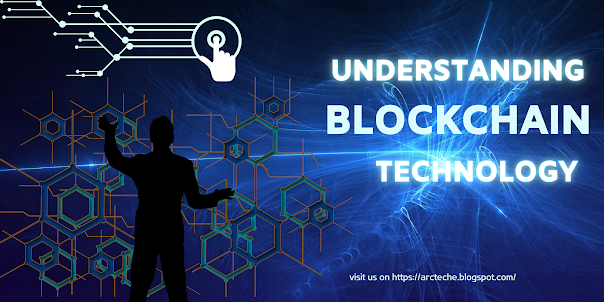Understanding Blockchain Technology: A Beginner's Guide
Introduction
In the digital age, where technology is evolving at a rapid pace, blockchain has emerged as a revolutionary concept with the potential to transform various industries. Originally developed as the underlying technology for Bitcoin, blockchain has since garnered attention for its decentralized and secure nature. However, understanding blockchain technology can be daunting for beginners. In this guide, we'll break down the fundamentals of blockchain, its key components, and its potential applications.
What is Blockchain?
At its core, blockchain is a distributed ledger technology that records transactions across a network of computers in a secure and transparent manner. Unlike traditional centralized systems where a single authority controls the data, blockchain operates on a decentralized network, making it resistant to tampering and censorship.
Key Components of Blockchain:
Blocks: In blockchain, data is grouped into blocks, each containing a list of transactions. These blocks are linked together in chronological order to form a chain, hence the name "blockchain."
Decentralized Network: Blockchain operates on a peer-to-peer network, where every participant (or node) has a copy of the entire blockchain. This decentralization ensures that no single entity has control over the network, enhancing security and reliability.
Cryptographic Hash Function: Each block in the blockchain contains a unique cryptographic hash that serves as a digital fingerprint. This hash is generated using complex mathematical algorithms and ensures the integrity of the data within the block.
Consensus Mechanisms: To validate and add new blocks to the blockchain, participants must agree on the validity of transactions through consensus mechanisms. Popular consensus algorithms include Proof of Work (PoW), Proof of Stake (PoS), and Delegated Proof of Stake (DPoS).
Immutable Ledger: Once a block is added to the blockchain, it becomes immutable, meaning that the data it contains cannot be altered or deleted. This feature ensures transparency and trust in the integrity of the blockchain.
How Does Blockchain Work?
Transaction Verification: When a new transaction occurs, it is broadcasted to the network for verification. Nodes on the network validate the transaction by confirming the sender's ownership and ensuring that the transaction meets the network's rules and protocols.
Block Creation: Validated transactions are grouped together into a block. Miners, who are participants in the network, compete to solve complex mathematical puzzles to add the next block to the blockchain. The first miner to solve the puzzle earns a reward in the form of cryptocurrency.
Consensus: Once a miner successfully mines a block, it is propagated to the rest of the network for verification. Nodes on the network verify the block's validity and agree to add it to the blockchain through the consensus mechanism.
Chain of Blocks: As new blocks are added to the blockchain, they are linked together in a chronological order, creating a chain of blocks that represents the entire transaction history of the network.
Applications of Blockchain Technology:
Cryptocurrencies: Bitcoin was the first application of blockchain technology, introducing the concept of digital currency and decentralized transactions. Today, there are thousands of cryptocurrencies built on blockchain platforms, including Ethereum, Ripple, and Litecoin.
Smart Contracts: Blockchain platforms like Ethereum allow for the creation of smart contracts, which are self-executing contracts with the terms of the agreement directly written into code. Smart contracts enable automated and trustless transactions without the need for intermediaries.
Supply Chain Management: Blockchain technology can be used to track and trace goods throughout the supply chain, providing transparency and accountability. By recording each step of the production and distribution process on the blockchain, companies can verify the authenticity and origin of products.
Identity Management: Blockchain-based identity management systems offer a secure and decentralized way to verify and manage digital identities. Individuals can control access to their personal information without relying on centralized authorities, reducing the risk of identity theft and fraud.
Conclusion:
Blockchain technology represents a paradigm shift in the way we think about data storage, transactions, and trust. Its decentralized and secure nature has the potential to revolutionize various industries, from finance and healthcare to supply chain management and voting systems. While blockchain is still in its infancy, its transformative impact is already being felt across the globe. As we continue to explore its capabilities and applications, understanding the fundamentals of blockchain technology is essential for navigating the digital landscape of the future.
Labels: Artificial intelligence, Blockchain, Information, Information technology, IT Technology



0 Comments:
Post a Comment
Subscribe to Post Comments [Atom]
<< Home